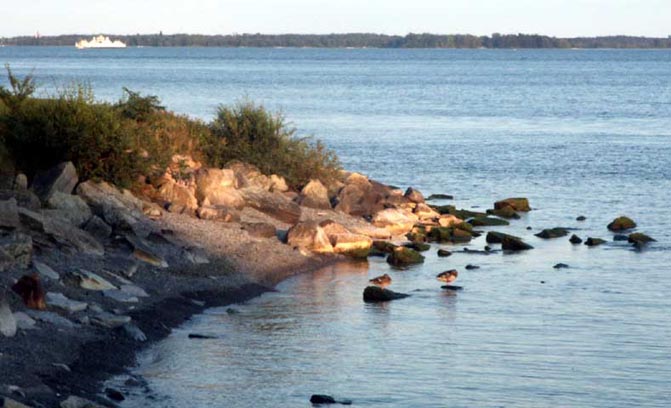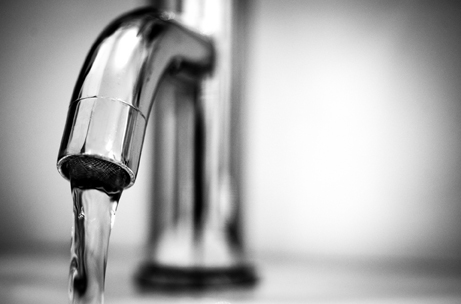Real-time WQ Monitoring in First Nations Communities Could Reduce Advisories

(Credit: Public domain, https://commons.wikimedia.org/wiki/File:Carlb-lake-ontario-02.jpg)
Canada is among the world’s most water-rich and wealthiest countries. Ontario, Canada and the United States share the Great Lakes—fully 18 percent of the fresh surface water on Earth. However, access to adequate sanitation and enough safe and affordable drinking water isn’t a given for everyone in Canada. Many First Nations indigenous people draw water from sources that are contaminated, receive inadequate treatment, or are difficult to access. And while the Canadian government typically regulates water quality, for First Nations reserve communities, there are no binding water regulations.
The existing solution, such as it is, involves drinking water advisories. These advisories, while they are sprinkled throughout the country, are most likely to exist in First Nations communities. From 2004 through 2014, at least one drinking water advisory affected 64 percent of First Nations in Canada. In fact, by September 2017, there were 144 advisories in effect in 98 First Nations communities.
The advisories are intended to provide a warning for localities when their water is not safe to drink. However, since many advisories on reserves last for years or even decades, many people eventually ignore them—or end up making choices about using water for hygiene or drinking that no one should have to make. In March of 2016, Prime Minister Justin Trudeau announced the new budget, which included funding for repair or replacement of failing infrastructure in First Nations communities.

(Credit: Pixabay, https://pixabay.com/en/water-tap-black-and-white-macro-2825771/)
A report from Human Rights Watch concerning access to safe water in First Nations communities in Canada points out that, while the financial commitment is important, other issues contributing to lack of safe water access remain. Specifically: the lack of binding water quality regulations covering First Nations reserves; the lack of support for water and wastewater systems at the household level; deteriorating source water conditions; chronic lack of funding and budgeting for capital, operation, and maintenance costs of water systems; and lack of support and capacity for water operators.
Real-time Monitoring of First Nations reserves
New research on drinking water advisories in Canadian First Nations communities from a team at the University of Guelph (UG) reveals that the majority are precautionary. Advisories are issued due to high microbial counts, pipe repair, malfunctioning equipment, and inadequate disinfection or disinfectant technology, or lack of water treatment system in place, the team concludes. They further argue that the number of these advisories could be reduced by more than one-third if real-time monitoring systems were deployed.
Professor Ed McBean of the UG School of Engineering, the study’s lead author and the Canada Research Chair in Water Supply Security, corresponded with EM about the research. Right now, issuing these warnings is a default reaction, in part because no real-time monitoring system is in place.

(Credit: University of Guelph, https://www.eurekalert.org /multimedia/pub/166930.php?from=389635)
“In the case of microbiology, it is the result of sending a sample to the lab and finding out if there is an issue,” explains McBean. “In other situations, drinking water officers assign drinking water advisories, for example.”
However, this kind of monitoring is well within our technical reach, right now. Real-time sensors that can be used to characterize water quality as to DO, temp, turbidity, free chlorine, and other factors, exist. These tools matter, because they can immediately detect both false alarms and real problems. Detecting changes in advance allow operators to take preventative steps as conditions change, reducing the number of advisories when no actual dangers are present.
“Many operators have numerous roles—the real-time identification that turbidity has increased might allow the operator to respond more quickly to changes in conditions,” adds McBean.
In many First Nations plants, a single person may be on duty at any given time. With automated real-time monitoring, the manpower focus can stay on treating rather than sampling and monitoring.
“It would certainly help—it can suggest that some conditions are changing and therefore warranting changing the operations,” remarks McBean. “It can also be used to train new operators.”
Of course, this kind of real-time monitoring is just one step toward access to clean, safe water for everyone on First Nations reserves; repairing and replacing outdated infrastructure, for example, remains important. In the meantime, however, significantly reducing precautionary drinking water advisories and responding more quickly to real problems is an excellent place to start—and the research proves it.




0 comments